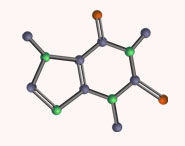


 علم الكيمياء
علم الكيمياء 
 الكيمياء التحليلية
الكيمياء التحليلية 
 الكيمياء الحياتية
الكيمياء الحياتية 
 الكيمياء العضوية
الكيمياء العضوية 
 الكيمياء الفيزيائية
الكيمياء الفيزيائية
 الكيمياء اللاعضوية
الكيمياء اللاعضوية 
 مواضيع اخرى في الكيمياء
مواضيع اخرى في الكيمياء
 الكيمياء الصناعية
الكيمياء الصناعية | Kaolin, smectite and hormite clays: from ceramics to natural absorbers |
|
|
|
Read More
Date: 17-6-2019
Date: 7-7-2020
Date: 10-5-2020
|
Kaolin, smectite and hormite clays: from ceramics to natural absorbers
Crystalline clays (aluminosilicate minerals) are categorized according to structure. Clays in the kaolin or china clay group (e.g. kaolinite, Al2Si2O5(OH)4) possess sheet structures with alternating layers of linked SiO4 tetrahedra and AlO6 octahedra. Smectite clays (e.g. sodium montmorillonite, Na[Al5MgSi12O30(OH)6]) also have layer structures, with cations (e.g. Na, Ca+2 , Mg+2) situated between the aluminosilicate layers. Interactions between the layers are weak, and water molecules readily penetrate the channels causing the lattice to expand; the volume of montmorillonite increases several times over as water is absorbed. Hormite clays (e.g. palygorskite) possess structures in which chains of SiO4 tetrahedra are connected by octahedral AlO6 or MgO6 units; these clays exhibit outstanding adsorbent and absorbent properties. Within industry and commerce, terms other than the mineral classifications are common. Ball clay is a type of kaolin particularly suited to the manufacture of ceramics: in 2001, 35% of the ball clay produced in the US was used for tile manufacture, 22% for sanitary ware, 14% for pottery and various ceramics, 6% for refractory materials, 7% for other uses, and the remainder was exported. Kaolinite (which is white and soft) is of great importance in the paper industry for coatings and as a filler; of the 8.1Mt produced in the US in 2001, 36% was consumed in paper manufacture within the US and 24% was exported for the same end-use. Worldwide, 41Mt of kaolin-type clays were produced in 2001, the major producers being the US, Uzbekistan and the Czech Republic. Smectite clays tend to be referred to as bentonite, the name deriving from the rock in which the clays occur; 4.3 Mt of bentonite was mined in the US in 2001, and this represented 41% of the total world production. Fuller’s earth is a general term used commercially to describe hormite clays; 2.9Mt was produced in 2001 in the US (74% of world production). Applications of smectite and hormite clays stem from their ability to absorb water, swelling as they do so. Drilling fluids rely on the outstanding, reversible behaviour of sodium montmorillonite as it takes in water: the property of thixotropy. When static, or at low drill speeds, an aqueous suspension of the clay is highly viscous owing to the absorption of water by lattice and the realignment of the charged aluminosilicate layers. At high drill speeds, electrostatic interactions between the layers are destroyed and the drill-fluid viscosity decreases. Fuller’s earth clays are remarkably effective absorbents and two major applications are in pet litter, and in granules which can be applied to minor oil spillages (e.g. at fuel stations)



|
|
|
|
دور في الحماية من السرطان.. يجب تناول لبن الزبادي يوميا
|
|
|
|
|
|
|
العلماء الروس يطورون مسيرة لمراقبة حرائق الغابات
|
|
|
|
|
|
|
انطلاق الجلسة البحثية الرابعة لمؤتمر العميد العلمي العالمي السابع
|
|
|